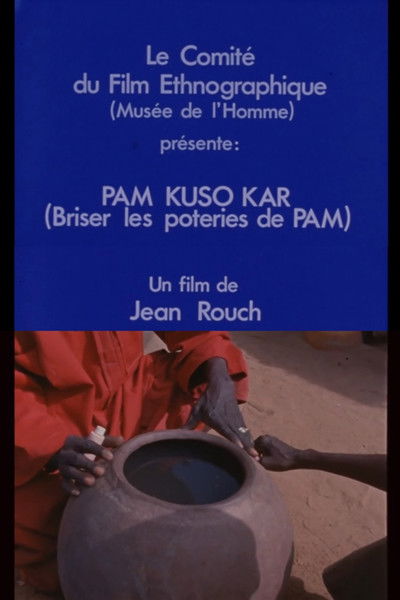Pam Kuso Kar (Breaking Pam's Vases)
Genres
Documentary
OverView
In February 1974, Pam Sambo Zima, the oldest of the priests of possession in Niamey, Niger, died at the age of seventy-plus years. In his backyard, the followers from the possession cult symbolically break the dead priest's ritual vases and cry for the deceased while dividing up the clothes of the divinities.
Others
Budget
$--
Revenue
$--
Status
Released
Original Language
French
Runtime
12 mins
Rating
0/10
Release Date
01 January 1974
Country
France


